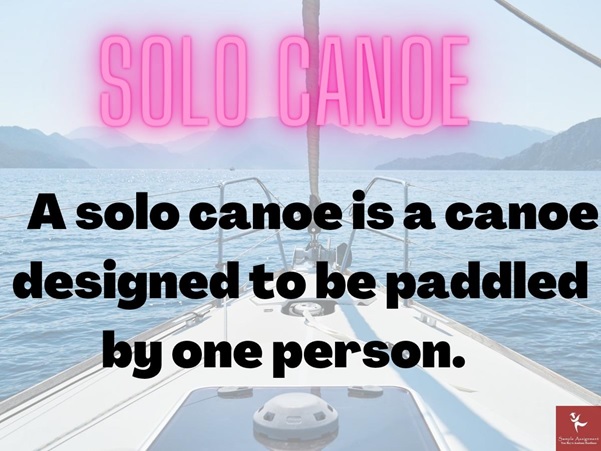The International River Grading System, which gives a general idea of a river's rapid characteristics and the degree of difficulty in navigating them, is used to describe Grade 2. This unit equips paddlers with the abilities necessary to navigate rivers with moderately frequent but uncomplicated rapids, regular medium-sized waves less than one meter in height, low ledges or drops, simple eddies, and gentle bends.
It applies to anybody guiding others during canoeing activities, including leaders, guides, or instructors. Complementary units offer leadership development opportunities. We offer SISOCNE004 assessment answers so that you do not face the issue and get a better grade.
This unit outlines the performance objectives, abilities, and information needed to canoe in a group along inland rivers with grade 2 rapids while following mapped-out routes. It calls for the capacity to do a capsized self-rescue and deep water rescues of others. We also provide Paddle with a canoe on grade 2 rivers assignment to help students understand the topic and draft their assignment solution carefully.

What are the topics covered in SISOCNE004 Paddle a canoe on grade 2 rivers?
The course will cover a wide range of topics. You will learn every important aspect of paddling a canoe on grade 2 rivers. While kayaking on grade 2 rivers, one must be aware of several points. Listed below are some of the topics.
- forward and reverse sweeps
- bow and cross bow draw
- feathered pry
- feathered and sculling draw
- low support using the back and front of the blade
- emergency stop
- breaking in and out of eddies and currents
- forward and reverse ferry gliding
- boils
- pour overs
- built objects weirs, piers
- steep or slippery banks or shore
- overhanging trees
- fallen trees on the waterway
Students can also receive SISOCNE004 academic assistance services from our experts if they can not understand the mentioned topic, as they are 24*7 available to resolve their issues.

What is the material used for Canoe Paddle?
It's amusing how many people are taken aback by how lightweight contemporary paddles are. No, you don't need to paddle with a whole tree; even a little weight loss can make a difference when considering how many times you'll raise your Paddle throughout the journey.
- Wood Paddles: The majority of paddles are still made of wood. Although they are heavier than alternatives made of fibreglass or carbon, these materials bend well, absorb stress, and feel warmer to the touch in cold weather. Fibreglass covering may be applied to the blade of some wood paddles, increasing both weight and toughness.
- Carbon/fibreglass paddles: Paddles made of fibreglass and carbon are often incredibly light and require little maintenance. In contrast to wood, manufacturers may produce sharp, intricate blade forms using composite materials. These paddles have significant weight savings your arms will appreciate it but you'll discover that their price reflects this.
- Plastic and Aluminum: Due to their durability and resistance to damage, aluminium-shafted paddles with plastic blades are frequently used as spares. They are heavy, have very little flex, and if you kink the aluminium shaft, they are pretty much damaged; therefore, we don't advise using them for prolonged periods.
- T-Grip vs Palm Grip: You should feel at ease holding the Paddle you chose. The grip on most paddles is either a palm or T shape. Paddling on flat water often favours a palm grip that is comfortable in hand over extended distances. Whitewater paddlers frequently use a T-shaped grip because it allows you to grab the Paddle between your fingers for better control securely.
- Blades of the Beavertail and Ottertail: In deeper seas, touring paddlers might wish to think about using narrower blades with an otter or beaver tail shape. Although they need a faster tempo, these paddles will cut through the water nicely. Bow paddlers could benefit from a little larger power face on the beavertail, while stern paddlers would prefer a longer, narrower blade for steering.
List of universities that offer short-duration courses in the SISOCNE004 unit.
Various online courses can help you understand how to paddle a canoe on grade 2 rivers. Students can also avail of our Online assignment help to score impressive academic grades. Listed below are some top universities:
- University of Australia
- University of Melbourne
- University of Sydney
- RIMT university
- Deakin university
- Charles Darwin university

What are the Advantages of taking an assignment solution on SISOCNE004 from us?
The best way to prepare for your SISOCNE004 assessment is by studying sample answers. You need to connect with our experts as they give you an idea, format and structure of how to draft an effective assignment solution. You can also check our SISOCNE004 assignment samples online to check the quality of our services. Our top assignment provider will assist you in each effective draft and assignment provider step.
Frequently Asked Questions
Paddling a canoe is an activity in which you use a paddle to propel yourself through the water in a canoe. Canoeing is a great way to explore nature and get some exercise, and it can be done on lakes, rivers, and even oceans.
Paddling a canoe means using a paddle to propel yourself through the water. To paddle a canoe on grade 2 rivers, you'll need to be able to control the direction and speed of your canoe.
Yes, We offer free samples and drafts.
Clients Speaks
Get FREE Quote In 2 Minutes *
Get
Flat 50% Off
on your Assignment Now!









